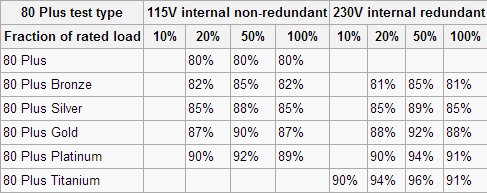Seasonic XP2 Platinum 660W Power Supply Review
Peter Donnell / 9 years ago
Efficiency, PFC and Voltage Regulation
Voltage Regulation
To test voltage regulation we load the power supply to five different load scenarios that give an equal spread of load across every single rail. So that means 20% on all rails, 40% on all rails and so on. We then calculate the average deviance of each rail from its expected voltage.

Due to the limitations of our load tester, we had to split the 12v rail across multiple “simulated” rails. These results are very impressive, with tight voltage regulation across all of the rails. The 12V2 was running a tiny bit high, but still well within a good tolerance overall.
Power Efficiency
Power efficiency is measured by calculating actual supplied wattage divided by the wattage drawn at the wall/plug, multiplied by 100 to give a percentage. We then compare that to the particular 80 Plus certification the company claims to see if it meets that. You can see the 80 Plus certifications below, we always test 230v power supplies.


This unit makes easy work of the 80 Plus Platinum certification, exceeding the standard by 3% in 20-40% load scenarios and that’s no bad thing, since that’s where your PSU will likely spend most of its time.
Power Factor Correction
Power Factor Correction is the ratio of the real power flowing to the load, to the apparent power in the circuit. The aim of PFC is to make the load circuitry that is power factor corrected appear purely resistive (apparent power equal to real power). In this case, the voltage and current are in phase and the reactive power consumption is zero. The closer the number to one the better as this allows the most efficient delivery of electrical power (Source – Wikipedia).

PFC was pretty decent overall, a little low at 20% but from 40% upwards it’s very impressive.



















